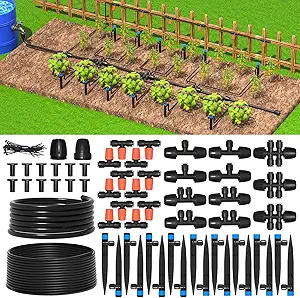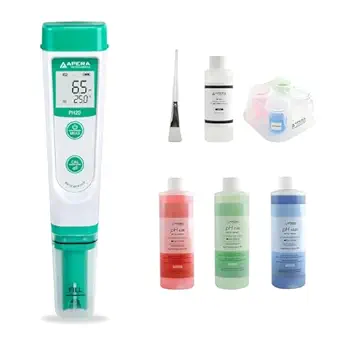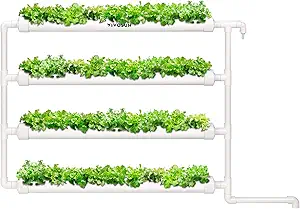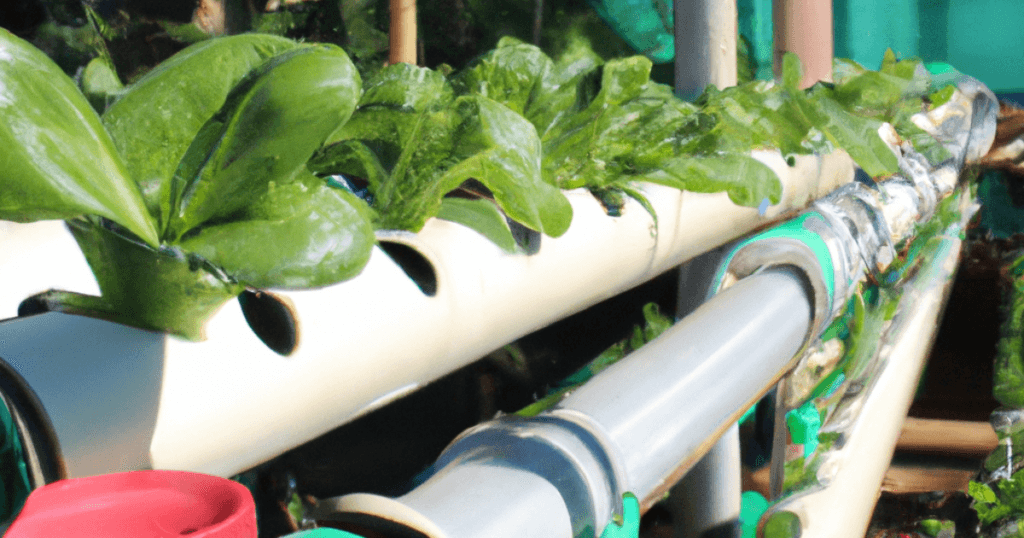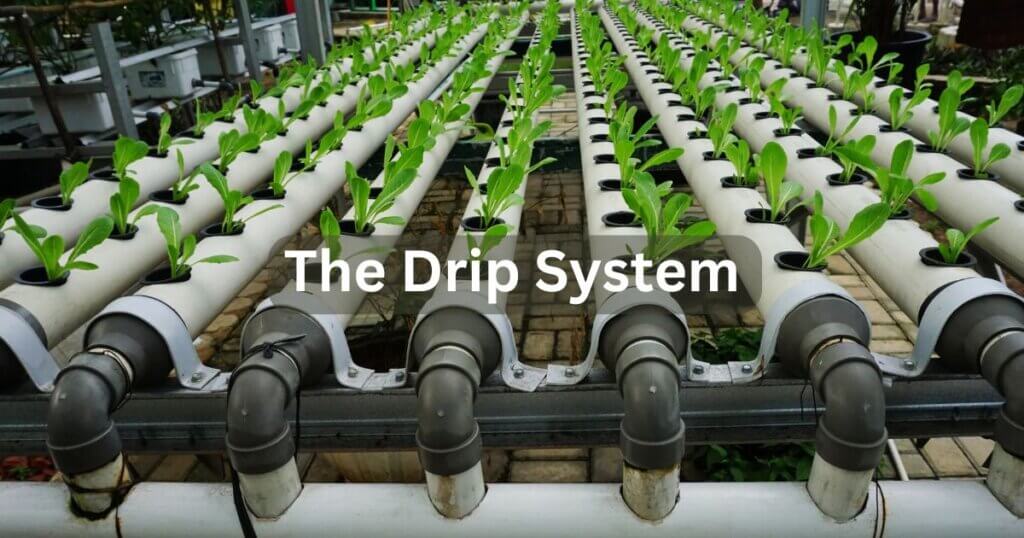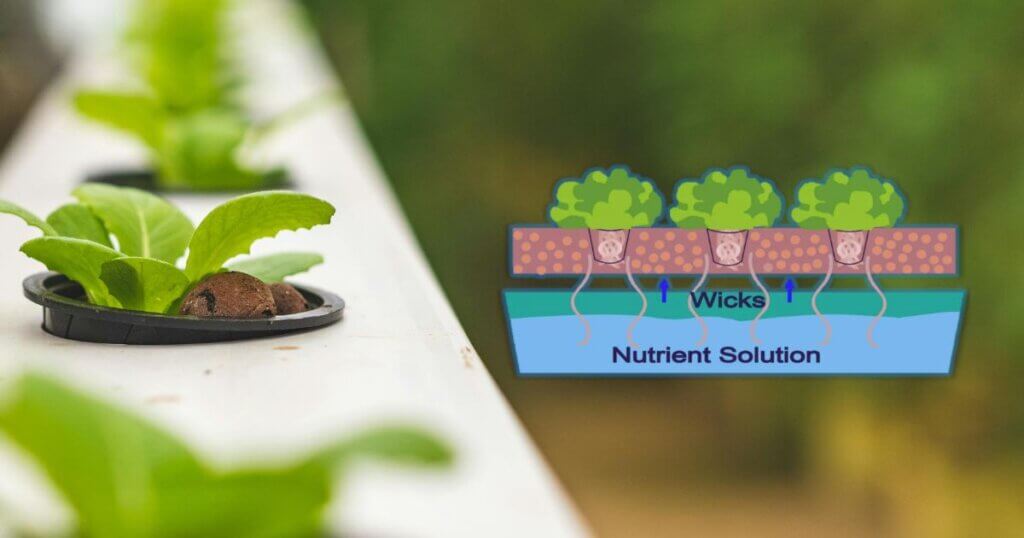Comparing Hydroponic Systems for Indoor Farming: The Ultimate Guide to Choosing What Works Best
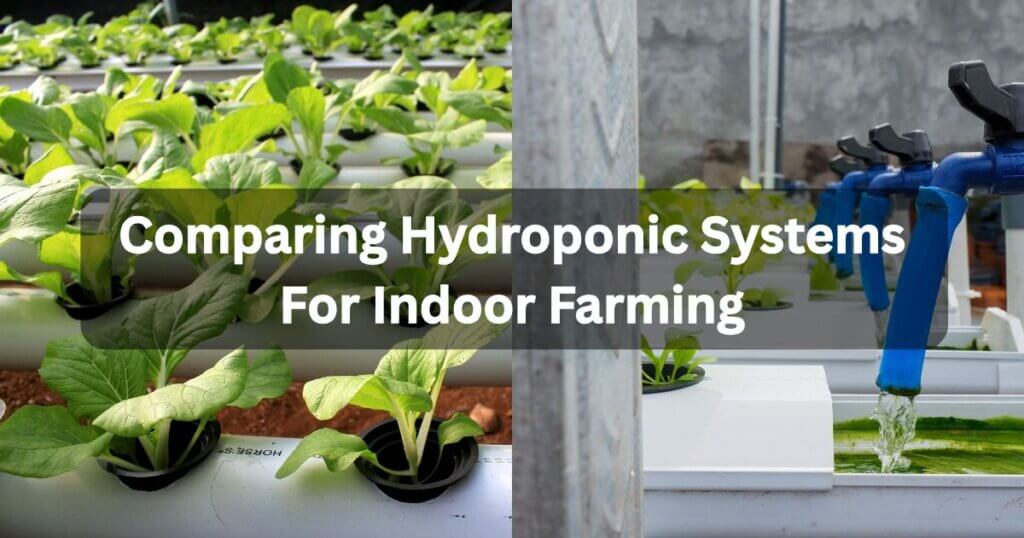
Some of the links in this post are affiliate links. As an Amazon Associate, we earn a referral fee from qualifying purchases—at no extra cost to you.
Indoor farming isn’t just a trend—it’s a full-blown revolution. And if you’re knee-deep in grow trays, LED lights, and the dream of hyper-efficient agriculture, chances are you’ve heard of hydroponics. But not all hydroponic systems are created equal. This guide dives deep into comparing hydroponic systems for indoor farming, helping you choose the right one for your space, goals, and budget.
Table of Contents
Why Indoor Farmers Are Switching to Hydroponics
So, what’s the hype all about? Why are growers ditching soil in favor of nutrient-packed water systems? It all comes down to control, efficiency, and faster growth. Hydroponic systems let you fine-tune everything—from nutrients to light—resulting in healthier plants and bigger yields. Plus, you can grow year-round, indoors, with less water and no weeds.
The Rise of Controlled Environment Agriculture (CEA)
Controlled Environment Agriculture is changing the game. It allows farmers to fine-tune every variable: light, temperature, humidity, CO₂ levels—you name it. And hydroponics is the engine behind this fine control. No soil means fewer pests, more efficient nutrient delivery, and a dramatically higher yield per square foot.
Traditional Soil vs. Hydroponics: What’s the Big Deal?
Imagine trying to grow strawberries in a concrete jungle. Soil takes space, it’s messy, and it’s inconsistent. Hydroponics gives you control. You can stack systems vertically, recycle water, and grow faster without ever touching dirt. It’s like giving your plants VIP access to nutrients on-demand.
What Makes Hydroponic Systems So Powerful Indoors?
Hydroponics isn’t just futuristic—it’s incredibly practical, especially indoors.
Space Optimization in Tight Growing Areas
With vertical stacking and compact setups, hydroponics lets you turn closets, basements, and warehouses into high-yield gardens. It’s IKEA meets agriculture—every inch is put to work. These systems are designed for maximum output in minimal space. Perfect for urban growers or anyone working with limited square footage.
Water Efficiency: Save More, Grow More
Indoor farming already reduces outdoor water waste, but hydroponics kicks it up a notch. Most systems use up to 90% less water than traditional farming. Water circulates, gets reused, and barely evaporates, making it incredibly efficient. It’s both eco-friendly and wallet-friendly—a win-win for sustainability and your budget.
Consistent Crop Yields Year-Round
Forget seasons. With hydroponics, strawberries in January or lettuce in July are totally normal. Controlled environments mean you’re no longer at the mercy of frost, drought, or pests. The result? Predictable, high-quality yields all year long.
Understanding the Core Types of Hydroponic Systems
Here’s where the magic happens. There are several types of hydroponic systems—and choosing the right one can feel like picking your Hogwarts house. Let’s break them down.
Deep Water Culture (DWC)
In a DWC system, plant roots hang in a nutrient-rich oxygenated water reservoir. Air stones bubble oxygen into the water to prevent root rot.
Pair your setup with a high-powered VIVOSUN Air Pump 950 GPH to ensure constant oxygen flow and healthier roots.
Benefits and Drawbacks of DWC Indoors
Deep Water Culture (DWC) is super low maintenance once you’ve got it up and running. It uses cheap materials, making it budget-friendly for indoor growers. It’s especially perfect for leafy greens like lettuce, spinach, or kale. However, it’s not ideal for large fruiting plants and requires close monitoring of water temperature to avoid root issues.
Nutrient Film Technique (NFT)
This system delivers a thin, continuous stream of nutrient solution that flows over plant roots inside a slightly sloped channel. The roots absorb what they need while staying partially exposed to air, reducing the risk of drowning. It’s a highly efficient method that uses minimal water and nutrients. However, it does require precise leveling and a reliable pump.
Best Crops and Setup Tips for NFT
NFT systems shine when growing fast, lightweight crops like lettuce, basil, and cilantro. Since the roots are suspended in a shallow stream, they thrive in this constant flow of nutrients. Avoid using NFT for heavier crops like tomatoes or cucumbers unless you include support structures. Also, clean the channels regularly to prevent clogs and ensure smooth flow.
Ebb and Flow (Flood and Drain)
Ebb and Flow systems work by periodically flooding the grow tray with nutrient solution, then draining it back into a reservoir. This cycle is controlled by a timer, allowing the roots to absorb nutrients and then get exposed to oxygen. It’s versatile and works well for many plant types, from greens to small fruits. But the timers and pumps must be checked often to prevent failures.
How It Works and When to Use It
The ebb and flow method mimics natural irrigation cycles, strengthening roots and promoting healthy growth. It’s excellent for medium-to-large plants when paired with grow media like clay pebbles. Use it when you want flexibility and strong root aeration. Just make sure your setup doesn’t suffer from clogs or timer malfunctions.
Wick Systems
Wick systems are the simplest hydroponic method out there. A wick draws nutrient solution from a reservoir and delivers it to the plant roots gradually. There are no pumps or moving parts, making it nearly foolproof. It’s passive, silent, and great for very small indoor setups.
Is It Too Simple or Simply Genius?
Wick systems are ideal for beginners growing small herbs like mint, basil, or oregano. Their simplicity makes them low-cost and low-risk. However, they’re slow to deliver nutrients and don’t support thirsty or large crops very well. For larger, fruiting plants, you’ll need a more robust system.
Drip Systems
A drip emitter feeds nutrient solution directly to each plant’s base.
A solid beginner-friendly option is the MIXC Hydroponic Drip Irrigation Kit, which includes tubing, drip emitters, and connectors for customizing your system.
The Most Versatile Hydroponic Method?
Absolutely. Whether you’re growing basil or beefsteak tomatoes, drip systems scale beautifully. You can adjust and customize drip rates to suit each plant’s needs. Just be aware that clogging is a common issue, so using filters and regular maintenance is essential.
Aeroponics
Aeroponics is the sci-fi superstar of hydroponics. In this method, plant roots are suspended in air and misted with a nutrient-rich solution. It offers excellent oxygen exposure and nutrient absorption. The system relies on high-tech equipment and precise timing.
The High-Tech, High-Yield Option
Aeroponics delivers the highest oxygen levels to roots, resulting in faster growth and bigger yields. It’s a favorite for experimental or commercial growers aiming for maximum efficiency. However, it demands constant monitoring, backup power, and technical know-how. Best suited for advanced growers who enjoy fine-tuning systems.
Comparing Hydroponic Systems for Indoor Farming: Which Is Right for You?
This is the part where it gets personal. What’s best for one grower might be overkill—or not enough—for another.
Cost Comparison: Budget vs. Premium Systems
| System | Estimated Cost (Setup) | Maintenance Cost | Best For |
|---|---|---|---|
| Wick System | $30–$70 | Low | Beginners, herbs |
| DWC | $50–$150 | Low | Lettuce, kale |
| NFT | $100–$300 | Medium | Leafy greens |
| Ebb and Flow | $120–$400 | Medium-High | Mixed crops |
| Drip System | $150–$500 | Medium | Large or mixed crops |
| Aeroponics | $400–$1000+ | High | Pros, tech-savvy growers |
Maintenance Levels and Time Commitment
Low-maintenance growers should stick with systems like wick or DWC, which require minimal intervention once set up. These are great for those who want to “set it and forget it.” On the other hand, if you enjoy tinkering with timers, pumps, and fine-tuning nutrient levels, aeroponics or drip systems might be your jam. They demand more time but offer greater control and yield potential.
Skill Level Required: Beginner to Pro
Wick and DWC systems are incredibly beginner-friendly and offer a gentle introduction to hydroponics. They require minimal knowledge and have fewer moving parts. Aeroponics, however, is a different beast. It comes with a steeper learning curve and is best left to growers who are comfortable with troubleshooting and system calibration.
Space Requirements and Scalability
For tight spaces like closets, apartments, or shelves, wick and DWC systems are perfect due to their compact design. They let you grow a surprising amount in a small footprint. If you’re aiming for a larger operation or commercial setup, systems like aeroponics or large-scale NFT offer much better scalability. These advanced setups can handle higher plant volumes and offer more sophisticated automation options.
Real-Life Use Cases: What Works Best for Common Indoor Crops
Leafy Greens and Herbs
Best systems: DWC, NFT, wick
These plants have shallow roots and grow quickly. They don’t need support structures or deep containers.
Tomatoes, Peppers, and Fruiting Plants
Best systems: Drip, Ebb and Flow
Heavier plants need stable support and precise nutrient control. Drip systems let you dial in exactly what they need.
Microgreens and Specialty Crops
Best systems: NFT, DWC
Microgreens grow fast and don’t need much depth. NFT is perfect for maximizing growing surface in a small footprint.
Must-Have Gear to Maximize Your Hydroponic Setup
Grow Lights, Nutrients, and Monitoring Tools
- Grow lights: Full-spectrum LEDs like the Spider Farmer SF-1000 give great results for hydroponics.
- Nutrient solutions: Use hydro-specific formulas like General Hydroponics Flora Series.
- Meters: A quality pH and EC meter is essential to avoid nutrient lockout.
The Spider Farmer SF-1000 offers excellent PAR output, energy efficiency, and a fanless design that keeps noise levels down.
A reliable choice is the Apera Instruments AI209 Combo Meter, which combines pH and EC readings in one easy-to-use device.
Recommended Starter Kits and Advanced Systems
- Starter kit suggestion: VIVOSUN Hydroponic Grow Kit (ideal for leafy greens)
- Advanced kit suggestion: AeroGarden Farm 24XL – sleek, stackable, and controlled via smartphone.
The VIVOSUN Hydroponic Grow Kit is perfect for beginners growing leafy greens. It’s compact, easy to assemble, and includes everything you need to get started.
Common Mistakes Indoor Farmers Make When Choosing a Hydroponic System
Ignoring Plant Compatibility
Trying to grow tomatoes in a wick system is like running a marathon in flip-flops. Every hydroponic system has its strengths and limitations. Choose your setup based on what your plant actually needs to thrive. Matching the right system to the right crop saves you time, money, and frustration.
Underestimating Equipment Needs
Cutting corners on equipment can cost you in the long run. Skipping essentials like an air pump or relying on weak grow lights will stunt your plants’ growth. High-quality gear might be a bigger upfront investment, but it pays off in healthier crops and better yields. Don’t skimp where it counts.
Forgetting About Maintenance Planning
Timers break, pumps clog, and nutrient reservoirs can develop buildup. Even the best systems need regular upkeep to function properly. Set a maintenance schedule and stick to it. A little routine care prevents major disasters down the line.
Final Verdict: Choosing the Best Hydroponic System for Your Indoor Farm
Here’s the truth: the “best” hydroponic system depends on your space, experience, and what you want to grow. If you’re just getting started, go simple with a wick or DWC. Ready to scale or grow complex crops? Ebb and Flow or drip systems are your allies. Love technology and precision? Aeroponics is your playground.
No matter which you choose, indoor farming with hydroponics puts you in control—and that’s where success starts.
FAQs on Comparing Hydroponic Systems For Indoor Farming
1. Can I use tap water in my hydroponic system, or do I need purified water?
While tap water can be used in some hydroponic setups, it may contain chlorine, chloramine, or high levels of minerals (like calcium or iron) that can interfere with nutrient absorption. It’s recommended to test your water first. If your water has high ppm (parts per million), consider using a reverse osmosis (RO) filter or distilled water for better plant health.
2. What type of lighting works best with hydroponic systems?
Full-spectrum LED grow lights are ideal for hydroponics, as they simulate natural sunlight and support all stages of plant growth. LEDs are energy-efficient, produce less heat, and can be tailored for specific wavelengths. High-intensity options like HPS or CMH lights are also used in larger or commercial setups but require proper heat management.
3. Do hydroponic systems attract pests or mold indoors?
Yes, they can—though less than soil-based systems. High humidity and stagnant air can encourage mold, algae, and pests like fungus gnats or spider mites. To prevent this, ensure proper air circulation with fans, monitor humidity levels, and clean your system regularly. Using neem oil or introducing beneficial insects can also help with pest management.
4. How do I know when to change the nutrient solution in my hydroponic reservoir?
Generally, you should completely change the nutrient solution every 1–2 weeks, depending on system size and plant uptake. Monitor pH and EC (electrical conductivity) daily—if values drift out of range or the solution becomes cloudy or smelly, it’s time to refresh. Topping off with fresh water alone isn’t enough long-term, as nutrient balance becomes skewed.
5. Is it possible to automate my hydroponic system for less hands-on maintenance?
Absolutely. Many indoor growers use timers, sensors, and smart controllers to automate nutrient dosing, pH balancing, lighting, and irrigation. Systems like the Bluelab Guardian Monitor or Hydroponic Auto Dosing Controllers allow you to monitor and adjust your setup remotely. Automation reduces error and saves time—especially useful for busy or commercial growers.
Other Useful Resources Related To Comparing Hydroponic Systems for Indoor Farming
- University of Florida IFAS Extension – Overview of Hydroponic Systems
https://edis.ifas.ufl.edu/publication/HS405
A comprehensive university-backed guide comparing hydroponic systems and their components for growers at different levels. - NASA – Advanced Life Support Systems: Hydroponics Research
https://www.nasa.gov/pdf/146558main_ffs_factsheets_hydroponics.pdf
A fascinating look at how hydroponics is being explored for space missions and closed-loop life support systems. - General Hydroponics – Nutrient Solutions and Feeding Charts
https://generalhydroponics.com/feedcharts/
Detailed feeding schedules for different hydroponic systems and plant stages using popular nutrient brands. - Maximum Yield – Hydroponic Growing Systems Explained
https://www.maximumyield.com/definition/3331/hydroponic-systems
An easy-to-understand breakdown of all major hydroponic systems, their benefits, and common use cases. - Agritecture – Commercial Hydroponic System Comparison
https://www.agritecture.com/blog/2020/5/6/comparing-commercial-hydroponic-systems
A data-driven blog post comparing commercial systems by cost, scalability, and technical complexity.

